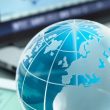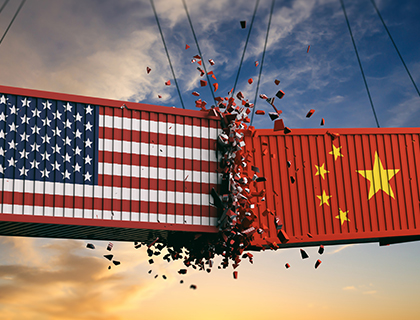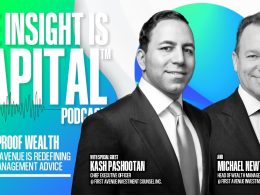by Brad Tank, CIO, Fixed income, Neuberger Berman
China and the U.S. are perhaps the biggest source of current investment risk, but not the most exposed.
A lot of capital moved to the relative safety of the U.S. dollar and U.S. markets in the years following the 2008–09 financial crisis. More recently, higher interest rates and Treasury yields have kept the flows going despite the dollar’s strength and the persistent twin deficits.
At some point, converging global growth and interest rates, and the simple law of gravity, should reverse those flows: That’s what many forecasters have been predicting for some time. But 2019 fund flows tell us that it simply isn’t happening.
We saw this in markets during August. U.S. Treasuries enjoyed their best month since 2008. In equities, the S&P 500 Index was already ahead of other major indices for the year before volatility struck. While periodically buffeted by the latest rumors and news on China-U.S. trade, it currently sits just 1.7 percentage points below its July high. Contrast that with the MSCI Emerging Markets Index, which is off by 8.5 percentage points from its high earlier this year.
Self-sufficiency
Money is still being sucked toward the U.S. despite it being right at the center of the biggest source of investment risk this year: the trade dispute with China.
This is a classic case of collateral damage. The U.S. and China are the source of risk, but not the most exposed.
Both are large enough, in terms of their geography and their consumer base, to sustain self-sufficiency. China has been clear that it is prepared to withstand short-term pain for its longer-term objectives. And while the U.S. is not immune to tariffs and trade uncertainty—last week’s data revealed its manufacturing sector dipping into contraction and joining the global downturn, as well as its trade deficit widening—its size and near-autarky lessens the impact.
Instead, the damage is being felt in medium-sized economies that rely on manufacturing exports; that means Europe—particularly Germany, its growth engine over the past two decades—and the emerging world.
It’s also being felt by global manufacturers that operate across the developed and developing world. Certainly, many are betting that the world has changed permanently. One feature common to many second-quarter earnings calls was management emphasizing a move away from China-dependent supply chains; for example, during its recent earnings discussion, Ralph Lauren said that it has decreased its China-sourced production from 33% in the last fiscal year to under 25% as of July 2019. This has come at a cost: Compressed margins and flat sales have yielded a 29% decline in the company’s stock price from its peak earlier this year.
A Cure Worse Than the Disease
Emerging markets enjoyed a brief resurgence in the first few months of 2019, but that was largely due to the U.S. Federal Reserve’s dovish pivot and expectations for a weaker dollar.
Since then, we have learned that other factors can exert more influence in these markets than a dovish Fed. In the Middle East and Russia, the factor has been sub-$60-per-barrel oil. In Latin America, it has been the political difficulties of new regimes in important countries. In Asia, it has been the trade dispute, with South Korea the best example of the midsized manufacturer bearing the brunt: Last week, it reported near-zero headline inflation and weaker second-quarter GDP.
This is a problem for global and emerging markets investors. The U.S.-China trade dispute is not going away; deals may be struck and tariffs may be cut, but intellectual property and security questions are now open and could take years to resolve.
Moreover, the shorter-term cure could be worse than the disease. With fund flows holding the dollar up, how low must U.S. growth and U.S. rates go to reverse them? And would those levels signal a general downturn that simply turns return-seeking flows into haven-seeking flows?
Right now, it takes a brave investor to look for value amid the collateral damage of the crumbling global trade consensus.
Copyright © Neuberger Berman













